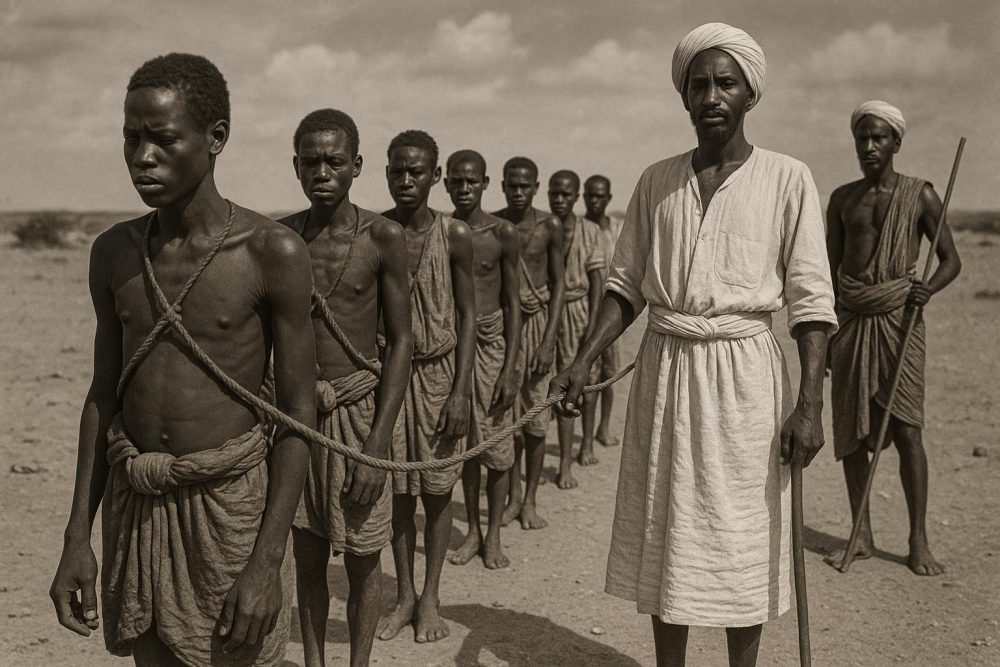
Historical Overview of the Slave Trade in Somaliland
The historical narrative surrounding the slave trade in the region now identified as Somaliland unfolds as an intricate tapestry of numerous influences and interactions. Geographically nestled in the Horn of Africa, Somaliland emerged as a pivotal area in the commerce of enslaved individuals, attributed to its strategic positioning along the Gulf of Aden. This location served as a vital connective point between the Arabian Peninsula and the broader African continent.
Key Players and Market Dynamics
Within the dynamics of the slave trade in Somaliland, several influential parties played significant roles. Among them were Arab traders, local Somali clans, and European merchants. The port city of Berbera emerged as a central hub in this commerce. It was instrumental in the trafficking of enslaved people. Traders originating from the Arabian Peninsula frequently traversed the Gulf of Aden to transport individuals who had been captured or procured from the hinterlands of East Africa.
Berbera’s vibrant market was host to a variety of goods, but the trade of humans maintained its status as a considerable economic activity among many merchants. The local Somali clans were not merely spectators but were actively engaged, both in capturing individuals and in engaging in their sale.
Trade Routes and Methods
The process of transporting enslaved individuals typically employed well-established caravan routes. These routes meandered through the interior regions of East Africa, leading to the coastal areas. Once they reached the coast, these individuals were shipped to various destinations such as Arabia, India, and areas within the Persian Gulf. The maritime routes were governed by the Monsoon winds, which made transit more efficient and predictable.
During transport, conditions for the enslaved were austere. Individuals often endured cramped spaces, suffered from inadequate nutrition, and faced stringent disciplinary measures. Upon arriving at the markets, they were sold into diverse roles, ranging from domestic servitude to more laborious tasks associated with plantations and salt mines.
Impact on Societal Structures
The slave trade deeply affected the societal structures within Somaliland and its neighboring regions. It provoked shifts in power dynamics among clans, especially empowering those who controlled or safeguarded the key trade routes. Such shifts were frequent catalysts for conflicts and alliances, which in turn, continually reshaped the political landscape of the region.
Moreover, the trade altered social hierarchies significantly. Descendants of freed or escaped slaves often came together to form distinct communities. These communities played a part in enhancing cultural diversity by influencing language, traditions, and everyday social practices within the region.
Efforts Towards Abolition
The movement toward the abolition of slavery in Somaliland materialized gradually. It was largely spurred by international pressure exerted by European powers during the 19th century. Growing global antipathy towards the slave trade, accompanied by evolving economic interests, resulted in treaties and naval patrols aimed at suppressing the practice.
Efforts focused on education, economic development, and international diplomacy, which were pivotal in these abolition initiatives. However, the effectiveness of these measures varied significantly across different regions. Over time, these initiatives collectively led to the cessation of this trade, although the echoes of its legacy continue to resonate through modern societal issues.
For those interested in delving deeper into this historical era, there exists a wealth of resources. Academic articles and databases provide invaluable insights, and they detail the complexities and human narratives intertwined with these historical events. Scholars and history enthusiasts can explore these resources to gain a broader understanding of the context and implications of the slave trade in Somaliland.